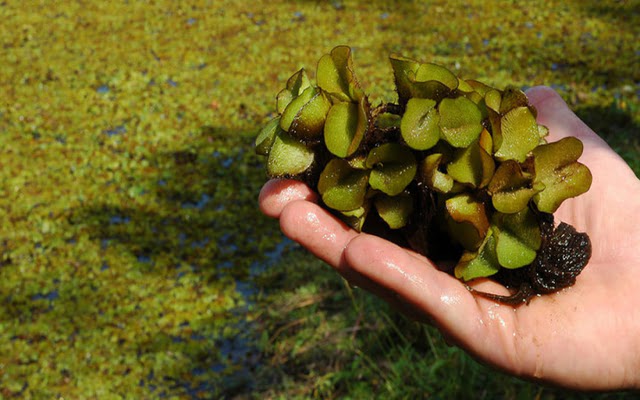
Does your household engage in gardening every spring? How about planting flower beds around the house? If your family enjoys fresh produce and beautiful flowers, then you are well aware that they require a lot of hard work.
In addition to planting and watering, there is an important, yet dreaded task that comes with those lovely flowers and delicious vegetables: weeding. If you have ever knelt down and manually removed weeds, you know how laborious it can be.
Weeds are often defined as unwanted plants that take up space and deplete nutrients from the desired plants we want to cultivate. Some weeds can be hazardous, such as poison ivy, while others may be bothersome due to their rapid spread, like kudzu.
So, which weed is considered the worst in the world? This is obviously subjective and varies depending on where you live. If you reside in Florida, Texas, or Louisiana, there is a high chance that one particular weed has earned the title of “World’s Worst Weed” in your opinion: giant salvinia.
Giant salvinia (Salvinia molesta) is a floating fern native to southern Brazil and northern Argentina. Scientists believe it has spread to other parts of the world through the trade of aquarium and garden-pond plants. Giant salvinia has caused significant problems in Australia, New Guinea, New Zealand, Zambia, and Zimbabwe, as well as in Florida, Texas, and Louisiana in the United States.
What makes giant salvinia so problematic? It grows at an astonishing rate, forming a dense mat of vegetation on the surface of slow-moving, warm, freshwater ponds, lakes, and rivers. This mat blocks out sunlight and reduces the oxygen level in the water, making it difficult for certain fish species and plants to survive.
Giant salvinia can become so thick that it hinders the flow of water, making it challenging, if not impossible, for boats to navigate. This can have an impact on important activities such as fishing and hydroelectric power generation.
Eliminating giant salvinia is extremely difficult once it becomes established. It grows so quickly that it can double in size within days. In fact, scientists estimate that under ideal conditions, a single giant salvinia plant can cover about 40 square miles in just three months.
Herbicide sprays are mostly ineffective as they only target the plants on the surface. Furthermore, the most effective herbicides are banned in the U.S. due to health concerns. Raking may work temporarily, but it is nearly impossible to remove all the plants, and they quickly multiply to their previous numbers.
So far, only one effective method has been found to control giant salvinia: the salvinia weevil. This small insect is native to the same regions as giant salvinia: Brazil and Argentina.
People in other parts of the world affected by giant salvinia have begun breeding and releasing salvinia weevils to biologically control the infestations. These tiny beetles feed aggressively on giant salvinia. Their larvae also burrow inside the weed’s rhizomes, disrupting the flow of nutrients and causing the plants to die and sink.
Give it a Try
Are you ready to tackle some weeds? Ask a friend or family member to join you in exploring the following activities:
- Can you recognize giant salvinia in its natural habitat? Take some time to examine these Giant Salvinia Photos on the internet. Afterwards, gather art materials and attempt to draw a picture of giant salvinia leaves from memory.
- Isn’t it fascinating that scientists have discovered a biological weapon to combat giant salvinia infestations? Go online and Meet the Salvinia Weevil to learn more about how this tiny creature can assist scientists in restoring waterways that are overwhelmed by giant salvinia.
- Invite an adult friend or family member to take you on a field trip to a local state or national park that has a nature center. Consult with a naturalist about invasive species that exist in your area. Can they provide you with examples? What methods are employed locally to combat these invasive species?
Additional Resources
- https://www.greatbigstory.com/stories/fear-no-weevil-taking-on-the-world-s-worst-weed
- https://tpwd.texas.gov/huntwild/wild/species/exotic/salvinia.phtml
- https://plants.ifas.ufl.edu/plant-directory/salvinia-molesta/
- https://www.nature.org/ourinitiatives/urgentissues/land-conservation/forests/giant-salvinia.xml
- http://entomology.lsu.edu/assets/salviniaweevil.pdf
- http://www.seagrantfish.lsu.edu/resources/factsheets/giantsalvinia.htm





Leave a Reply